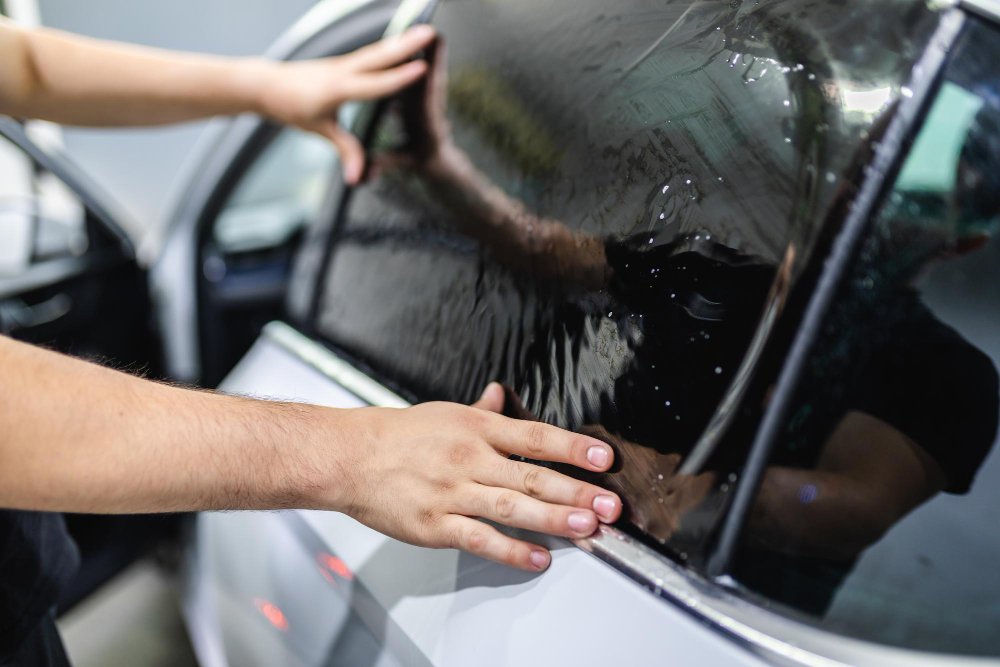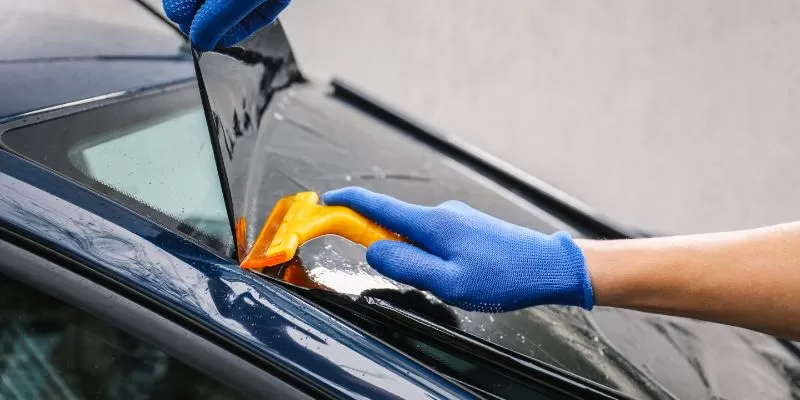Auto Window Tinting: Tips for Preserving a Specialist Finish
Auto Window Tinting: Tips for Preserving a Specialist Finish
Blog Article
Window Tinting Laws and Guidelines: What You Need to Know Before Tinting Your Car
Prior to proceeding with window tinting for your vehicle, it is essential to familiarize yourself with the diverse laws and guidelines that control this technique across various states. These regulations determine the permissible levels of tint darkness, usually measured by visible light transmission (VLT) percents, and consist of specific terms for front windshields aimed at ensuring road safety and security.
Introduction of Window Tinting Regulations
Window tinting legislations are often based on variation throughout different jurisdictions, reflecting regional laws and safety considerations. These regulations dictate the allowable levels of tint darkness and reflectiveness on lorry home windows, ensuring that motorists preserve appropriate exposure while likewise safeguarding against hazardous UV rays and warm.
A lot of guidelines classify home window tinting based on the Visible Light Transmission (VLT) percentage, which shows the quantity of light that can travel through the home window. Typically, lower VLT percents signify darker colors. Laws often differentiate in between the front, side, and back windows, with stricter limitations used to the front windshield to boost safety and security for both the vehicle driver and other road users.
Additionally, some jurisdictions enforce constraints on the reflectivity of the color, protecting against excessive glare that might impair presence. Exceptions to these regulations may exist for people with certain medical conditions requiring extra sunlight protection. Compliance with window tinting guidelines is important, as offenses can lead to penalties, required elimination of the color, and potential rises in insurance coverage premiums. Consequently, it is crucial for vehicle proprietors to acquaint themselves with neighborhood laws before proceeding with home window tinting installments.
State-by-State Tint Regulations
Understanding the specific home window tinting regulations in each state is important for lorry proprietors looking for to abide with the law. Each state in the U.S. has established its own set of guidelines governing home window tinting, which can differ substantially. These laws frequently determine the allowable degrees of tint darkness, the types of windows that can be tinted, and any medical exemptions that might apply.
For circumstances, states like The golden state have rigid restrictions on color darkness for front home windows, while others, such as New Mexico, might enable darker colors. Additionally, particular states mandate specific presence portions for numerous home windows, consisting of the windscreen, front side windows, and rear windows. It is critical for auto owners to acquaint themselves with their state's laws to avoid potential penalties or penalties.
Moreover, some states might call for an accreditation sticker label to be put on tinted home windows, indicating compliance with state regulations. Failing to adhere to these laws not just takes the chance of lawful repercussions but can also influence safety and visibility while driving. Car owners need to carry out complete research study or consult regional authorities to make certain complete understanding and compliance with state-by-state color policies.
Allowed Tint Types and degrees
Numerous car proprietors may be stunned to find out that permitted color degrees and kinds differ commonly throughout different states. Each state has developed its own guidelines regarding the allowable darkness and reflectivity of home window tint, often determined by Visible Light Transmission (VLT) portions. VLT refers to the amount of light that can travel through the tinted home windows; therefore, a lower percent suggests a darker tint.

Moreover, the kinds of tint materials Read Full Report enabled can differ, with some states prohibiting metal or mirror-like coatings. It is essential for vehicle owners to familiarize themselves with their state's details laws to ensure compliance. Non-compliance can result in penalties, obligatory elimination of the tint, or other lawful effects, making it important to comprehend these laws prior to proceeding with installation.
Medical Exceptions for Tinting
While not all states give allocations for clinical exemptions concerning home window tinting, those that do acknowledge the necessity for specific individuals to improve presence and convenience due to clinical problems. Different clinical conditions, such as lupus, skin cancer, and particular eye problems, can make individuals particularly sensitive to sunlight. These individuals might call for darker tints to shield themselves from dangerous UV rays and glare.

It is important to keep in mind that despite having a clinical exemption, there may still be limitations on the level of color allowed. Compliance with state laws makes certain that people are both protected and within legal limitations. Those considering medical exceptions need to call their local Department of Electric motor Autos or equivalent authority to understand the treatments and requirements required to look for an exemption properly.
Penalties for Non-Compliance
Falling short to follow window tinting legislations can cause considerable charges, which vary by state. Law enforcement firms are encouraged to provide citations for cars that do not stick to the defined tinting regulations. These penalties typically include fines, which can vary from modest total up to several hundred bucks, relying on the intensity of the offense and the state in inquiry.
In some jurisdictions, duplicated offenses may cause intensifying penalties or additional penalties, such as mandatory court looks. Non-compliance might necessitate the removal of unlawful tinting, typically at the proprietor's expenditure. In severe instances, habitual culprits might face suspension of their vehicle registration till from this source compliance is attained.
In addition, insurance policy effects may emerge from receiving several citations for home window color offenses. Insurance companies may check out such offenses as a sign of riskier behavior, potentially resulting in enhanced premiums or trouble in insurance coverage.
To stay clear of these penalties, it is essential for vehicle owners to familiarize themselves with their regional home window tinting laws and ensure that their vehicle complies (Window Tinting). This proactive strategy not just avoids lawful implications yet also advertises roadway security
Final Thought

A lot of regulations categorize window tinting based on the Visible Light Transmission (VLT) portion, which shows the amount of light that can pass with the home window. Compliance with window tinting regulations is vital, as offenses can result in fines, mandatory elimination of the tint, and prospective increases in insurance coverage costs.Understanding the details window tinting policies in each state is essential for car owners looking for to abide with the legislation. These regulations usually dictate the allowed levels of color darkness, the kinds of home windows that can be tinted, and any type of clinical exceptions that may apply.
For instance, states like The golden state have rigorous constraints on color darkness for front home windows, while others, such as New Mexico, might permit darker tints.
Report this page